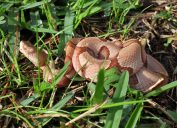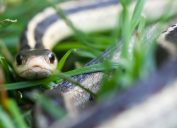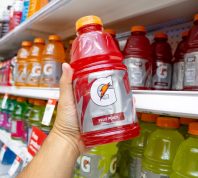Keeping This Outside Will Attract Snakes to Your Yard, Experts Say
This common mistake is inviting reptiles into your space.

No one wants to come across a snake in their yard—especially since this means they're just one quick slither away from entering your home. Just because snakes are ultimately useful for keeping other pests at bay doesn't mean we're eager for a close encounter. Nevertheless, most of us aren't doing what we can to keep these reptiles out of our space. In fact, you may be inviting them to your yard without even realizing it. Read on to find out what you should always avoid keeping outside your home.
READ THIS NEXT: 9 Ways to Snake-Proof Your Yard, According to Experts.
Snakes are most active in the fall.
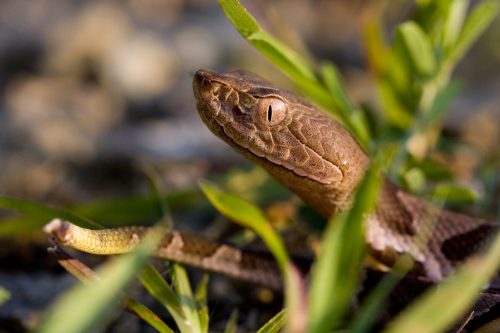
If there was any time to be most worried about attracting snakes to your yard, now would be it. Snakes are more active in the U.S. during the fall than any other season of the year, according to the Georgia-based pest control company Northwest Exterminating.
There are several reasons for this, the first being that most snakes are born between July and September, so baby snakes will be more visible in the fall as they look for their first meals. Snakes are also actively moving around in the fall because they are searching for somewhere to hibernate throughout the winter. And some types of snakes mate during the fall, which means they could also be looking for love.
"With the weather still ideal and an abundance of rain from late summer storms and hurricanes, fall is prime time for snakes to be active. Falling leaves in the fall also provide ideal camouflage for snakes," the experts at Northwest Exterminating explain. But that doesn't mean you have to be providing snakes even more reason to move into your yard during this active season.
Keeping one thing outside can attract snakes to your yard.
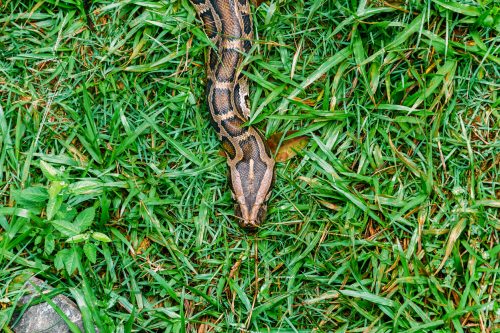
There is plenty of outside space for snakes to roam around during the fall season. But Rachel Salant, an animal behavior specialist working with Veterinarians.org, tells Best Life that homeowners who keep pet food outside are unknowingly making themselves a more attractive target to snakes on the move.
"People may want to keep pet food outside because they prefer to feed their pets outside. However, I highly discourage this," she says. "In order to peacefully coexist with all wildlife, including snakes, it is best practice to keep all pet food inside the home."
For more home advice delivered straight to your inbox, sign up for our daily newsletter.
Snakes are drawn to pet food for more than one reason.

Pet food is attractive to snakes for multiple reasons. According to Brian Clark, BSN, a biological expert and founder of United Medical Education, pet food has two factors working in its favor—or against it, depending on how you feel about having snakes coming to your yard.
"Pet food is typically high in protein, which snakes love," Clark explains. "It also has a strong odor that can attract snakes from a long distance."
But Jack Miller, a pest expert and founder of the home improvement website How I Get Rid Of, says that neither of these are the main reason why snakes appear attracted to pet food. In fact, Miller says they aren't all that interested in the food itself. "Snakes are attracted to rodents that feed on the pet food," he says.
According to Miller, rats, mice, and other small mammals will be the first to seek out pet food that has been left outside. And this, in turn, creates an unfortunate snowball effect. "Snakes are carnivorous animals that feed on rats and mice and prefer to have easy access to their food," he continues.
There are certain changes you can make to protect your yard.
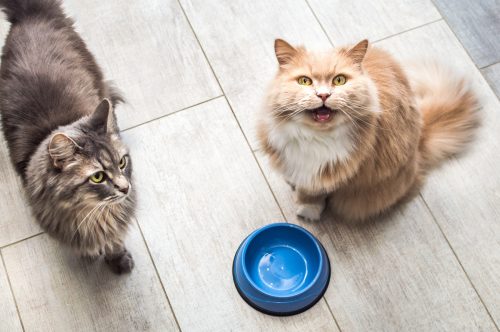
The absolute best way to avoid attracting snakes to your yard is to keep your pet's food inside at all times. But that might not be a possibility for everyone, nor is it a change everyone may be willing to make.
"If you absolutely must keep bags or cans of pet food stored outside, make sure it is in an airtight, sealed container," Salant advises. The animal behavior specialist also notes that metal containers are preferable to plastic because the latter can easily be chewed through by rodents.
At the same time, if you are going to continue feeding your pet outside, don't let them graze. Daniel Caughill, an animal expert and co-founder of The Dog Tale, tells Best Life that it's best to feed grazers inside. Otherwise, you should "put away their food while they're not eating it," he says.
"Give your pet a few minutes to eat, then take the food inside," Caughill shares. "This will have the double benefit of training your pet to eat better. If your pet discovers later that they wish they had access to their food, they'll start to learn to eat their meal when it's available instead of grazing."
